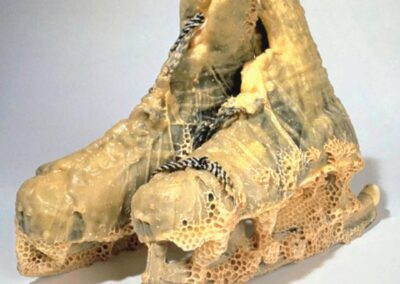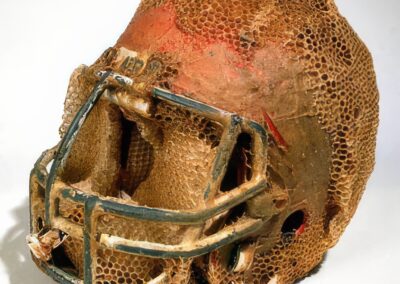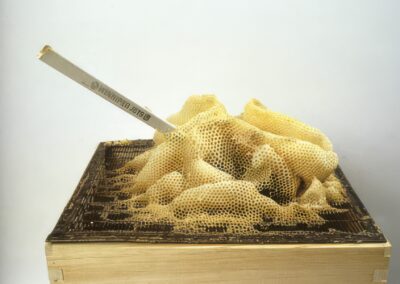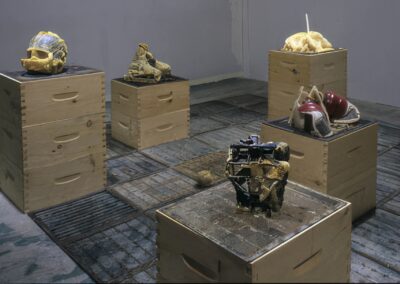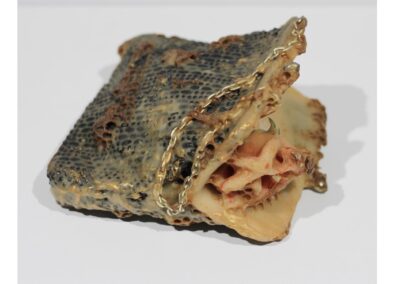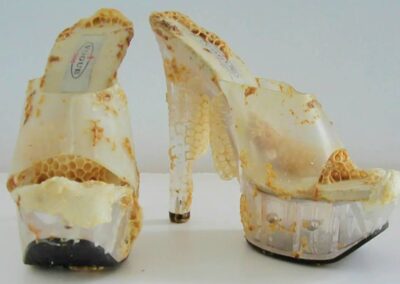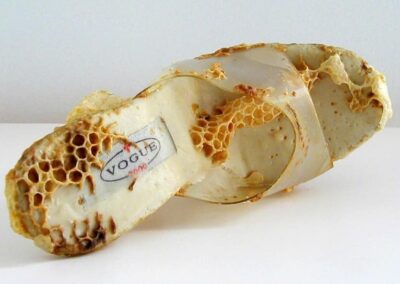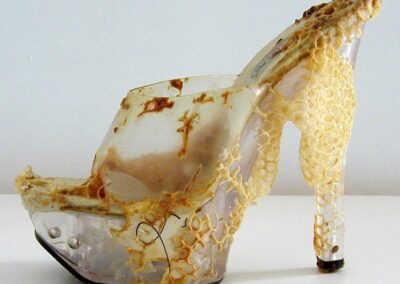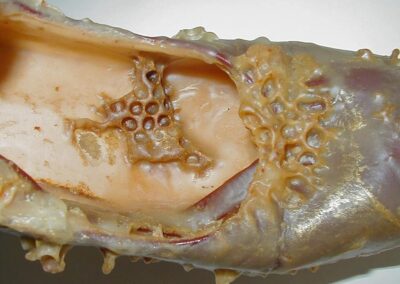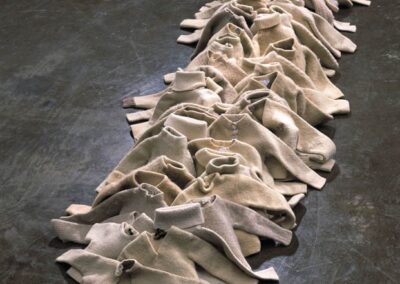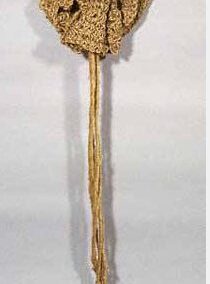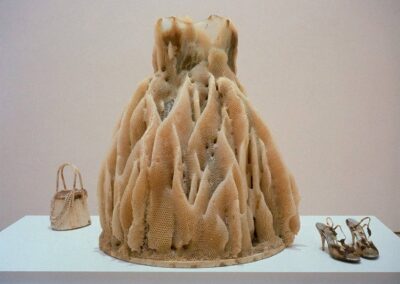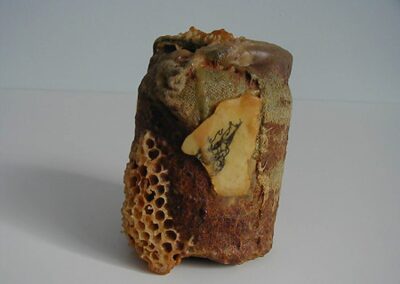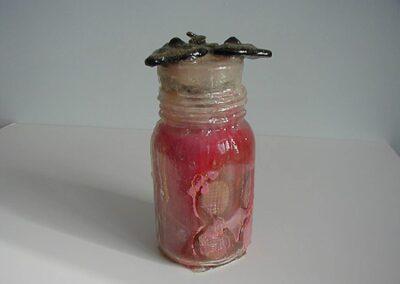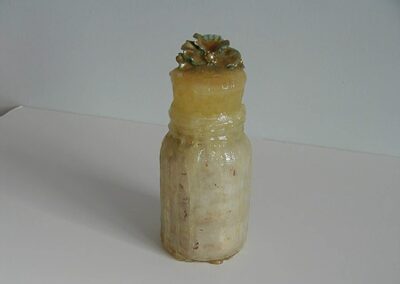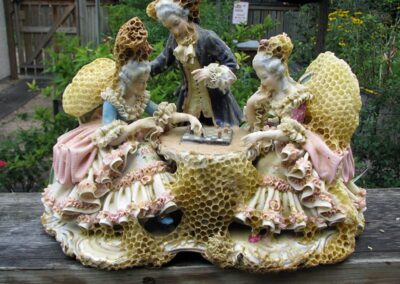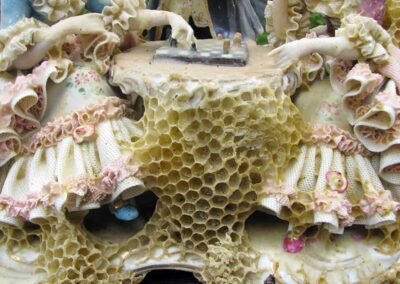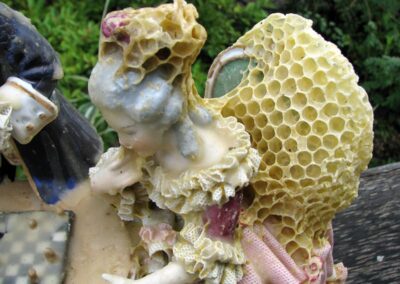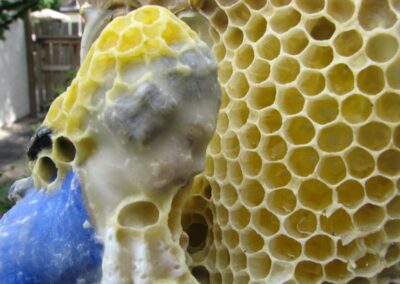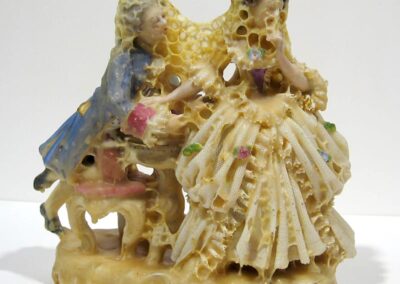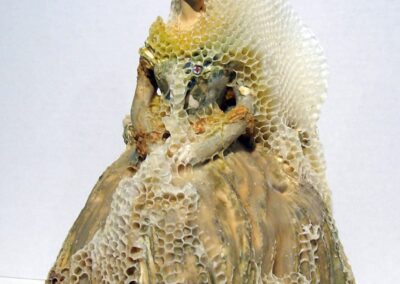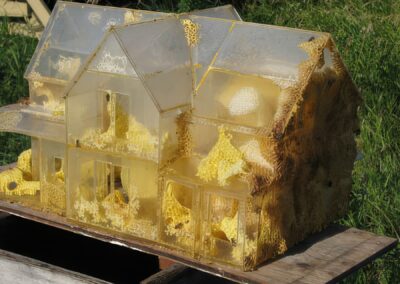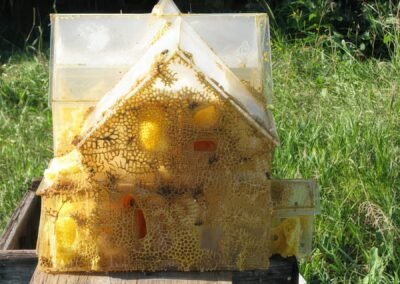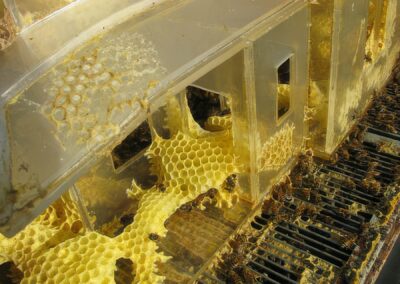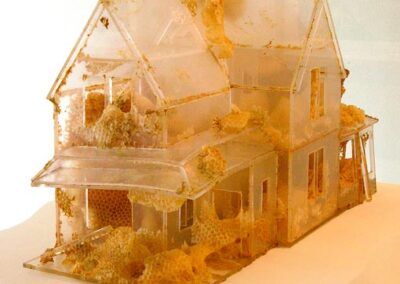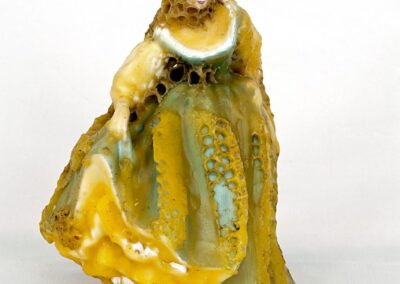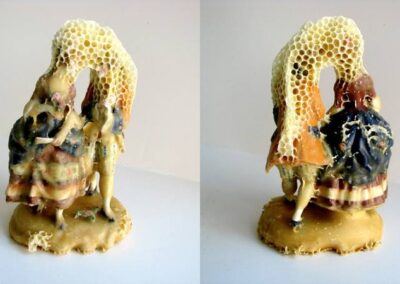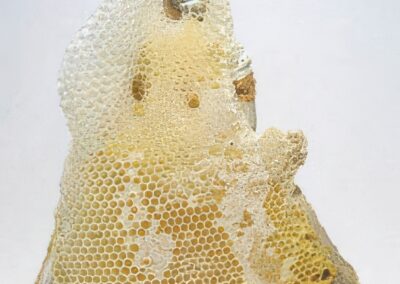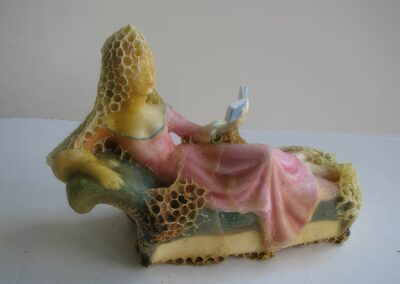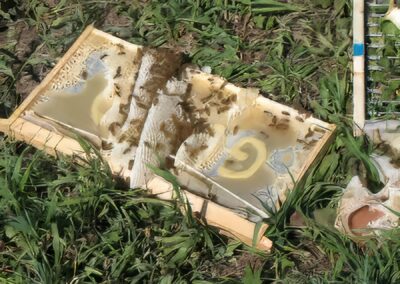The next Artist You Need To Know is Aganetha Dyck (1937 – 2025).
She was a Canadian artist who worked primarily in sculpture, best known for her collaborative work with live honeybees wherein she would place various objects into their hives and they would build honeycombs around and upon. Dyck was “interested in environmental issues, specifically the power of the small. She [was] interested in inter species communication. Her research asks questions about the ramifications all living beings would experience should honeybees disappear from earth.” (from her site)
She was born in 1937 into a Mennonite family in Marquette, Manitoba : this was a French-Canadian farming community north of the city of Winnipeg. Dyck has commented that her rural upbringing with its focus on hard work was a formative aspect of her character and practice. Dyck would relocate to Prince Albert, Saskatchewan in 1972, where she took art classes from the Prince Albert Community College. She was also mentored by the artist George Glenn and furthered her studies, specifically in art history, and after returning to Winnipeg in 1976, Dyck would take classes in art history at the University of Winnipeg (1980 and 1982, respectively). In the 1970s, Dyck was also a student of master weaver Margreet van Walsem, but found she didn’t have the patience for ‘loom based work.’
Her early works were focused upon more ‘domestic processes’ that employed ‘household’ materials such as buttons, fabrics, and other more ‘banal’ objects (in this manner she shared some aesthetic similarities with previously featured Artist You Need To Know Joyce Wieland). At this time Dyck also created a number of felt sculptures, or buttons (exhibited in hundreds of jars) that were ‘prepared and cooked using different culinary techniques.’
From the National Gallery of Canada : “Dyck focuses more on the process of creating than on the making of a final product. Her early domestic experiences, filled with labour-intensive rituals – canning, washing, ironing – paved the way for the body of work she continues to produce.”
However, Aganetha Dyck’s most renowned – and most enchanting, if also somewhat eerie – works are her sculptures and collaborations with honeybees.
Curator Cathi Charles Wherry offers the following about these seductive artworks : “They remind us that we and our constructions are temporary in relation to the lifespan of earth and the processes of nature. This raises ideas about our shared vulnerability, while at the same time elevating the ordinariness of our humanity.”
These works were inspired by Dyck encountering a store sign made out of honeycombs : “Dyck places objects into beehives, or beehives into objects, and allows insects to build honeycomb on the objects, sometimes over the course of years….[Some works have taken] 10 beekeeping seasons to create….Her work with honeybees has drawn attention from the press, and Dyck has been featured in the CBC television show The Nature of Things, with David Suzuki.” Collaborating with bees, beekeepers and entomologists in her practice, she has stated that one of the things that she hopes people consider with her art is that “people will realize the importance of the honeybees’ work.” (from here)
A wonderful response to the art and ideas of Aganetha Dyck written by Di Brandt can be enjoyed here.
Several videos of installations of Dyck’s works – that include interviews with the artist – can be seen here and here.
Dyck had her first solo show at the MacKenzie Art Gallery (Regina, Saskatchewan) in 1976 : she has exhibited widely both in Canada – including at the National Gallery – and internationally. A career landmark took place in 1995 when the Winnipeg Art Gallery organized a major touring retrospective of Dyck’s work.
An extensive listing of her exhibitions can be seen here, and in 2016 Aganetha Dyck: The Power of the Small by Julian Jason Haladyn was published. This was published through Blue Medium Press and was part of the Canadian Artist Monograph Series (CAMS).
Aganetha Dyck passed away in July of 2025. Her legacy includes being recognized with the Canada Council’s Governor General’s Award for visual and media arts in 2007 and being the Recipient of the Manitoba Arts Award of Distinction in 2006. She was also a board member and mentor in Mentoring Artists for Women’s Art and was instrumental in supporting and platforming many artists in Manitoba and across Canada.
Her art can found in many collections including the National Gallery of Canada, the Burnaby Art Gallery (Burnaby, BC, the Confederation Centre Art Gallery (Charlottetown, PEI), Dunlop Art Gallery (Regina, SK), Kelowna Art Gallery (Kelowna, BC), Oakville Galleries (Oakville, ON), Vancouver Art Gallery (Vancouver, BC), Winnipeg Art Gallery (Winnipeg, MB), Tom Thomson Memorial Art Gallery (Owen Sound, ON), the Saskatchewan Arts Board (Regina, SK), the Manitoba Arts Council Art Bank (Winnipeg, MB), the Canada Council Art Bank (Ottawa, ON), Glenbow Museum (Calgary, AB), the Art Gallery of Guelph (Guelph, ON) and the Art Gallery of Windsor (now Art Windsor-Essex, Windsor, ON).
As well, the University of Manitoba Archives & Special Collections has the Aganetha Dyck Fonds, including a variety of papers and other ephemera about her life and career.
A video produced in tandem with her exhibition at the Confederation Centre for the Arts can be enjoyed here. Much more of Aganetha Dyck’s artworks can be seen here at the CCCA and her site is here.

